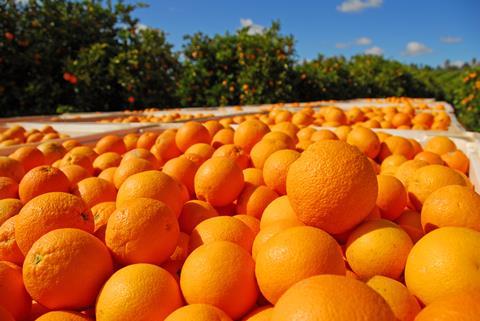Shorter Northern Hemisphere crop allows for ideal start for Southern Hemisphere suppliers like South Africa

The South African citrus sector has been told it can expect a smooth transfer from the Northern to the Southern Hemisphere supply season.
Referencing data from the World Citrus Organisation (WCO) annual general meeting, chief executive of South African Citrus Growers’ Association (CGA) Justin Chadwick said one of the smallest crops in the Mediterranean region for the last decade should make for a seamless switch.
“Spanish late oranges are 27 per cent below the four-year average, while Spanish verna lemons are down 32 per cent against the average,” Chadwick said.
Data provided to the WCO also revealed significant increases in import prices of between 20 and 38 per cent, with lemons being the best performing category.
“In Europe there will be competition for imported Southern Hemisphere citrus from other fruits, namely stonefruit and bananas that are expected to be heavier in volume than the last two seasons,” a WCO report said.
Chadwick noted the growth in citrus plantings and orchards around the world.
“Hectares under citrus have grown in the southern hemisphere since 2013. Orange hectares have experienced modest growth from 132,000ha to 136,000ha, while there has been substantial growth in the Mandarin hectares from 67,000ha to 88,000ha, with similar figures for lemon hectares, increasing from 65,000ha to 87,000ha,” Chadwick said.
Chadwick said ranges still lead Southern Hemisphere citrus export estimates with 1.57m tonnes, which is a 2 per cent increase over 2022 and 1 per cent more than the five-year average. Mandarins are at almost 1m tonnes – a 3 per cent increase over 2022 and 16 per cent increase over five-year average.
However, the final mandarin figures differ from information provided at the AGM due to lower final estimates compared to provisional estimates.
Lemons are at 928,000 tonnes, 10 per cent less than 2022 and at five-year average levels. Finally, grapefruit are at 220,000 tonnes – 13 per cent off 2022 and 13 per cent off the long-term average.
Chadwick, in his report to South African growers, also revealed that South African volumes shipped so far this season runs ahead of last year’s figure, with 9.8m cartons exported against the previous year’s 6.5m cartons.
“The 2023 estimation process has been extremely difficult given the uncertainty around global factors and the experiences of 2022. After much deliberation the Mandarin Focus Group have settled on an estimate of 34.1m cartons – a 7 per cent increase from last season. The satsuma season is almost complete with 1.413m cartons (91%) of the 1.557m carton estimate already packed,” he said.
South Africa’s total estimate still stands at 165.6m cartons, compared with last year’s 164.8m cartons.



